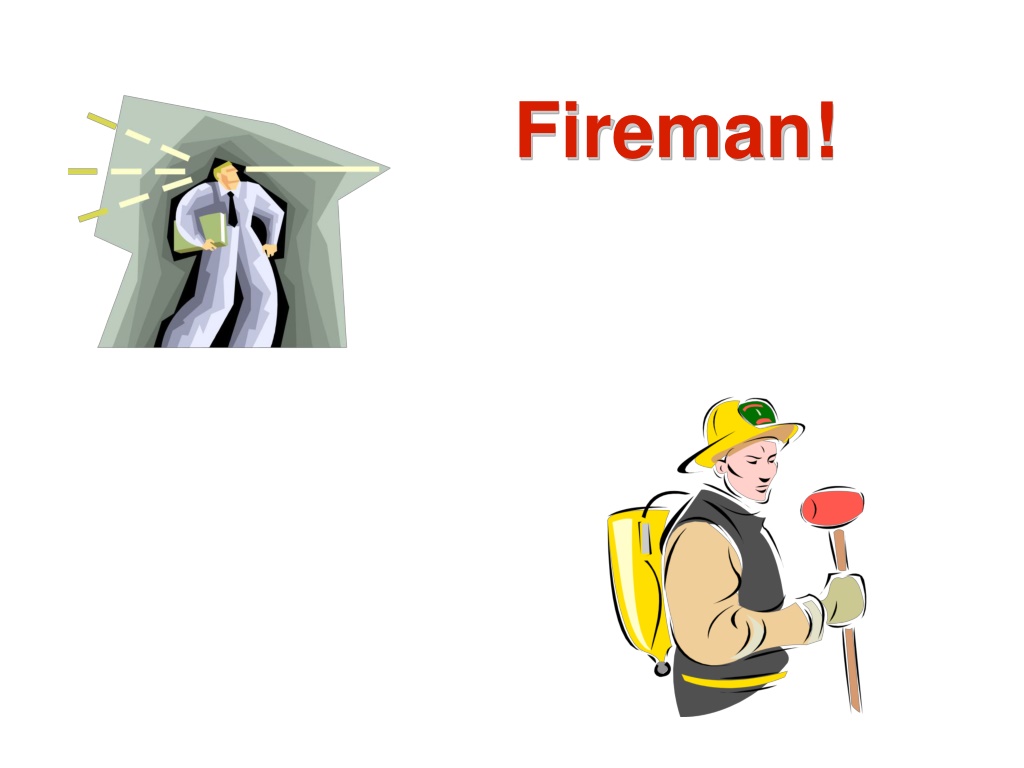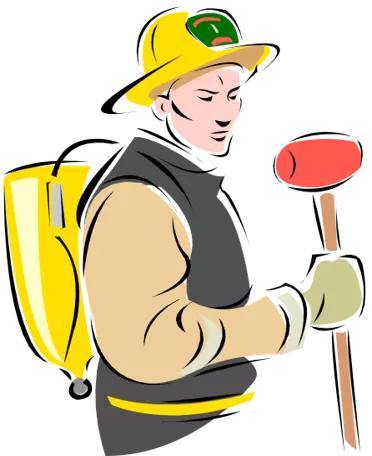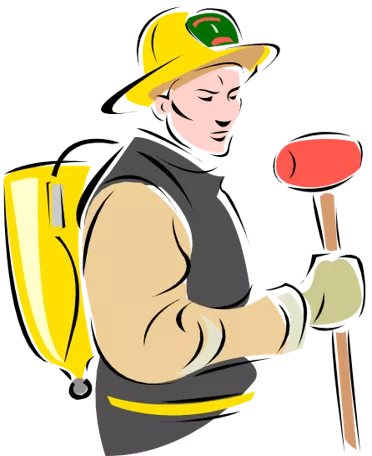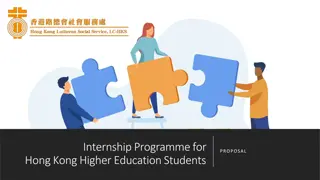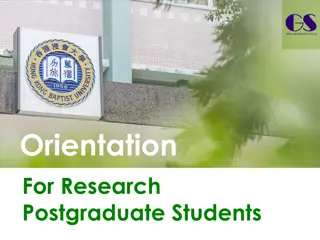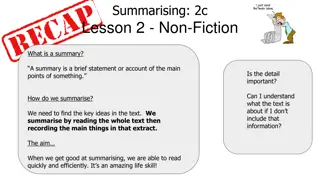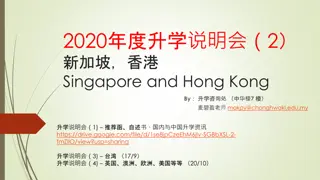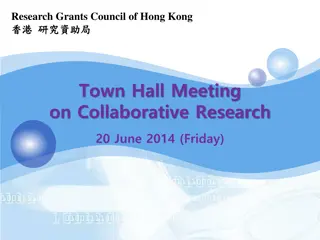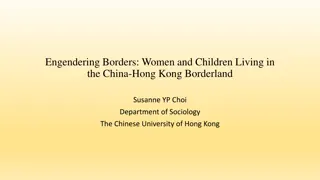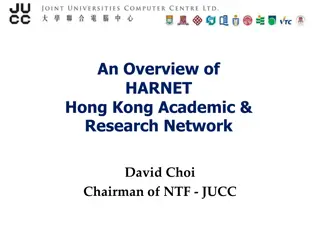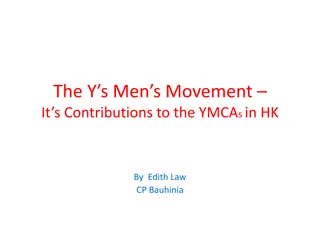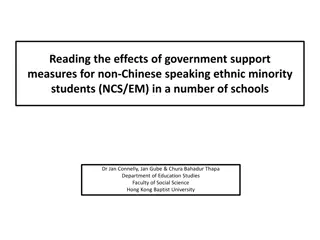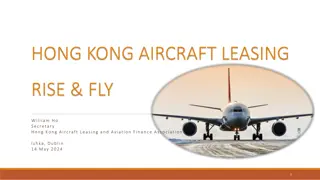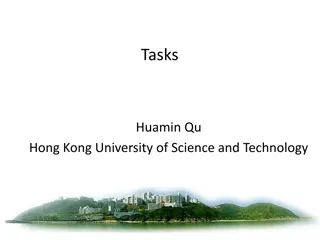Communication Process in a Hong Kong Company
Visual slides depict a conversation between a manager and a specialist in a Hong Kong company regarding fabric printing processes. The specialist reports on inspecting an industrial plant, discussing steaming and printing methods with the manager. The presentation delves into discourse management, online management, and writing processes in communication within the textile industry.
Uploaded on Oct 08, 2024 | 0 Views
Download Presentation

Please find below an Image/Link to download the presentation.
The content on the website is provided AS IS for your information and personal use only. It may not be sold, licensed, or shared on other websites without obtaining consent from the author. Download presentation by click this link. If you encounter any issues during the download, it is possible that the publisher has removed the file from their server.
E N D
Presentation Transcript
That is not how you say it!! =fire fighter
The next slide notates a bit of talk between a manager and a specialist in a company in Hong Kong. The specialist had returned from inspecting how fabric is printed in an industrial plant and is reporting to the manager.
Director: Specialist: Er Director: Specialist: Yes they have keep + a a machine to cue the fabric + + How to say? Director: What s the print process? They steam it? Specialist: Yes they steam it yes just like baking right? This is circle right? The fabric is fit inside and then a pressure steam | | something like that Director: | | Oh Oh I know How d they cue the print? Acid dye? (from Jenny Chow s MA thesis 1996:84, A Study of Communication in a Textile Quality Management Services Company)
I must watch my r s Hypercorrection
Discourse management = On-line management
lets look at the writing process (and then at speaking)
Managing writing Is there a reply to writing? Not during writing (production). If there is a reply at all, it comes much later .
Managing writing So what does the writer have to do? That the speaker need not do?
When people write, they DRAFT PLAN WRITE ERASE
Discourse Management GENERATE MANAGE
Discourse Management PRODUCING TALK ADJUSTING GENERATE MANAGE NOTING (e.g., DEVIATIONS FROM NORMS) EVALUATING
Interaction creates language
People manage languages
and people even organize to manage language
People manage in order to make sense A new word or turn of phrase may have to be found The machinery may need fixing
Discourse management [aj v- woz] Noted Evaluated Adjusted Implemented (I was) deviation of [v] [v] is inadequate [v] to [w]
People manage in order to be stylistically appropriate be socially acceptable
A Social Problem Swedes were uncertain which pronoun of address to use.
A Social Problem ni or du To avoid a choice, people used passives, paraphrases Difficult! Or one had to remember the Other person s name AND correct title The media and politicians declared du the winner!
People manage in order to advocate an interest
Interest: a symbolic problem Peking Beijing Bombay Mumbai Rangoon Yangoon
Discourse management Language behavior is generation of utterances and evaluation of utterances. Generation of utterances is shaped by and allows overt expression of evaluation. Evaluative behavior is language management.
Discourse management Language management interacts with language generation in a circular process of causation sustained by and embedded in the interaction of participants
Diagramming a norm deviation talk A deviation from norms (No deviations) Unnoted Noted Evaluated Disregarded (negative =) Inadequacies Unsure Positive Disregarded Referred Disregarded Referred Adjustment Implemented Disregarded
Directed management = Off-line management
Discourse management Off-line management: The inadequacy or referral become the problem
Language Management Discourse management = On-line management Directed management = Off-line management
Language Problems People don t share a language Find a shared language Find an interpreter Learn the other s language and there s any number of problems that relate to the use of a language
Maharashtra state in India; language mentions in newspapers With K. S. Rajyashree, examined three Marathi newspapers, the Mahrashtra Times, Sakal, and Tarun Bharat from November through February 1984. We identified 260 language mentions which can be classified and grouped under the following main headings:
Maharashtra state in India; language mentions in newspapers THE NATIONAL LANGUAGE PROBLEM REGIONAL LANGUAGES AND REGIONALISM THE PROBLEM OF LINGUISTIC MINORITIES LANGUAGE AND STATE BOUNDARIES LANGUAGE CONFLICTS ABROAD DEMAND FOR LANGUAGE SERVICES, SKILLS THE HANDICAPPED LANGUAGE TEACHING
CORRECT LANGUAGE Correct pronunciation Correct grammar Correct lexical item, word What is in a name? Correct writing Overt comment on norms and evaluation principles Contact correction, translation Codemixing and codeswitching Speaking Reading
Make real! This is all very abstract
Cantonese Did I say real ?
Cantonese 2 Same demonstration
Issues Scripts index Uyghur identity, Standardization involves developing a norm that overrides regional dialects, a process that then allows specific linguistic contexts to be evaluated and codified. to standardize the extant lexicon as well as to introduce neologisms from Chinese connotation management [of use of words] before publication, all articles... to be vetted by a publications committee (Arienne M. Dwyer)
Language development, quoting C. Kubler While spoken Old Chinese, like all languages, continued to evolve over the succeeding centuries, written Old Chinese usually referred to as G w n or Classical Chinese became relatively fixed in form at an early date and changed little until the first few decades of the twentieth century. With the overthrow of the Qing Dynasty in 1911, the twin issues of language standardization and language reform, which were considered essential for the building of a modern nation, attracted the attention of increasing numbers of intellectuals. In 1913 the Ministry of Education of the newly established Republic of China sponsored a Conference on the Unification of Pronunciation which, after protracted discussion, proclaimed the dialect of North China, known in English as Mandarin, as the Gu y or National Language of China.
Continued (from C. Kubler) Several years later, in 1917, the American-educated philosopher and literary critic Hu Shih spearheaded a movement to replace Classical Chinese with written Mandarin, or B ihu , as the standard written language.This movement, known as the X n W nxu Y nd ng New Literature Movement, gradually gained support during the 1920s and 1930s. After the founding of the People s Republic of China in 1949, the new government continued the previous government s policy of promoting Mandarin, to which it gave the new name P t nghu Common Speech. Beginning in the 1950s, a number of important reforms were implemented in China including standardization of variant characters, promotion of simplified characters, adoption of the horizontal style of writing, and creation of Hanyu Pinyin romanization.
In the PRC today, what is the language policy? what are some language problems? what language management agencies are there?
Language problems differ between historical stages of development In the context of conspiracy of the dur e of the episteme of the period
Once upon a time The Swedish academy founded in 1786 is an example of pre-modern language development
XXII Academiens yppersta och angel gnaste g rom l r, at arbeta upp Svenska Spr kets renhet, styrka och h ghet, s uti Vettenskaper, som serdeles i an-seende til skaldekonsten och V ltaligheten uti alla thes tilh rande delar, jemv l uti then, som tjenar at tolka the Himmelska Sanningar. to work on the purity, strength and dignity of the Swedish Language, in the Sciences and especially in regard to Poetry and Rhetoric in all their parts, as in the part which aims at interpreting Heavenly Truths.
XXIII Ty ligger fven Academien at utarbeta en Svensk Ordabok och Gramatica, jemte s dana Afhandlingar som bidraga kunna til stadga och befordran af god smak. to produce a Swedish Wordbook and Grammar, and such Dissertations as contribute to the stability and enhancement of good taste.
(LM agencies now) Spr kv rdsportalen: some Swedish LM agencies [www.svenskaspraket.nu]
Language problems differ by different configurations of interest A research task is to develop hypotheses about types of organized (off-line, directed) language management by interest and societal context of speech community.
Returning to Xinjiang The functions of the Xinjiang Language and Script Committee have broadened considerably from its original overt mission of developing a language norm, standardizing an orthography, and instituting language codification. Today, the committee is far more active in the public sphere fostering political, educational, media, and public service working groups and even an informative website. (Arienne M. Dwyer)
And here is another case of how language management changed in the same speech community over time, from South Africa:
South Africa: 1876-1904Eerste Taalbeweging (G.R.A.), to stand for our language, our nation and our country (for Afrikaans) 1909 onSouth African Academy, promoting Hollands (Afrikaans and Dutch) but came to focus on language reform of Afrikaans in three areas in particular, oStandardisation of spelling o Expurgation of anglicisms o Development of terminology (sci-tech vocabulary) continued
1925 Afrikaans proclaimed an official language: translation of official documents, and creation of vocabulary ( terms ) 1930 State Translation Bureau established, followed by the establishment of terminology bodies in government departments; creation of terminology 1950 specialist Vaktaalburo (Technical Language Bureau) established, supervised by the S.A. Academy; coordinating other agencies term work: manuscripts were sent to subject experts for review before dissemination
